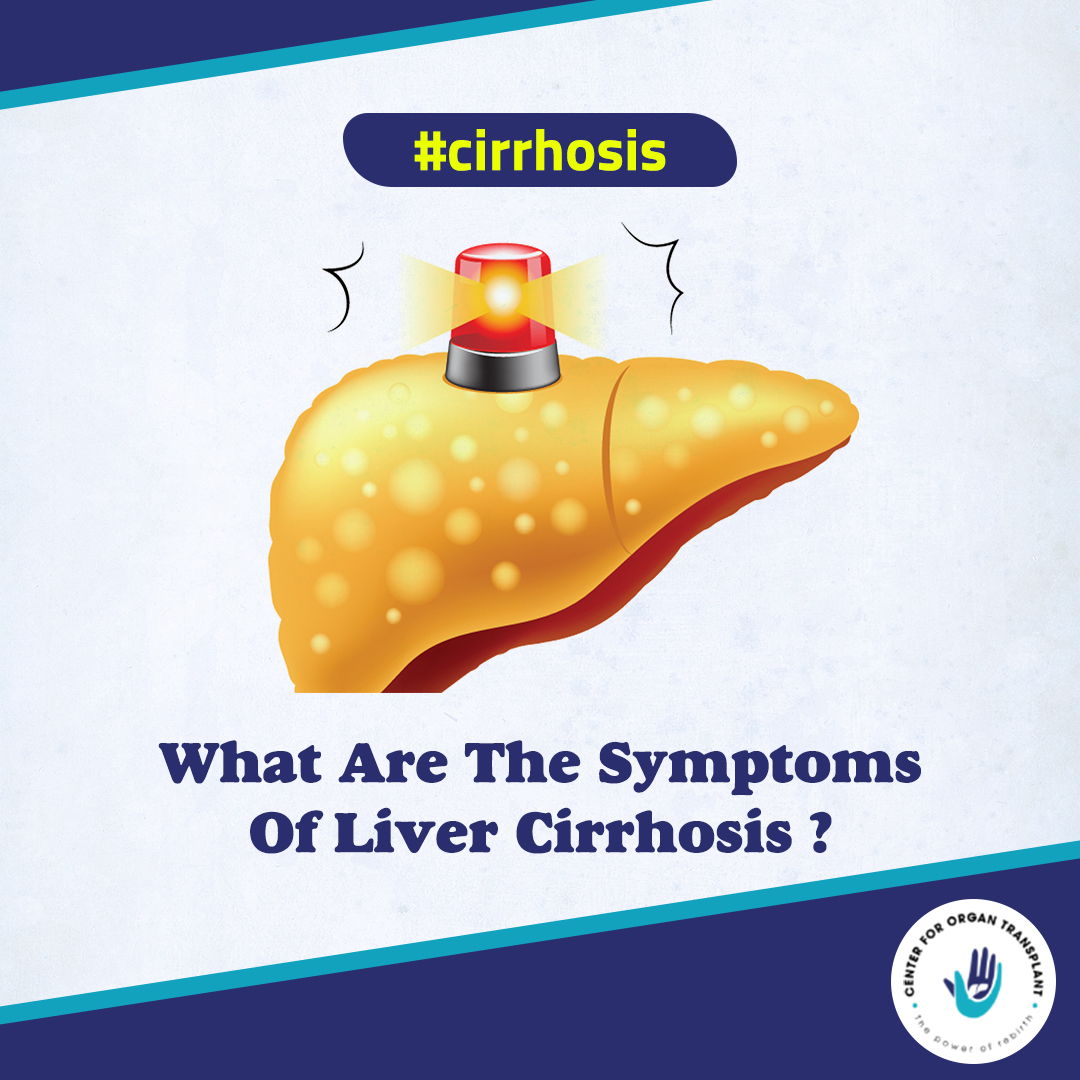Liver Cirrhosis
By
Dr.Bipin Vibhute

What is a Liver Cirrhosis?
To put it simply, cirrhosis of the liver is a complication that occurs due to continuous damage to the liver. When a person suffers from liver damage due to other diseases, unsuitable treatments or lifestyle choices, liver tries to repair itself. New cells form to replace the ones that are lost and over time the inflammation gets repaired.
However, in case the damage is occurring on a consistent basis, this overactive cell generation causes adhesion inside of the scar tissue. Like, if you have too much drinking habit, you will end up noticing signs of acute liver failure in cirrhosis.
Liver Cirrhosis Guide
The organs of human body work efficiently and are constantly trying to fix themselves in case of damage. However, occasionally, these organs, like the liver, cannot repair themselves through constant damage and then scars form. Specifically, the damage affects the cells to keep working overtime and too much of that causes more scar tissue.
As a result, a condition called cirrhosis appears in the liver, and that shows harmful effects on the body. It is not easily diagnosed in its early stages but liver failure in cirrhosis can be prevented if you know what to look for. Not to mention, some treatment methods are also available if cirrhosis is caught during the early stages.
In this article, you will learn more important factors that ultimately cause these issues and how you can combat them.
1. Common Causes of Cirrhosis
Firstly, when you notice the early signs of alcoholic liver cirrhosis, you should know that it did not appear out of the blue. Certainly, when the liver starts failing over a continued period, that is when this condition occurs. One of the most common causes of this is the consumption of alcohol over an extended period of time.
As a result, your organ starts deteriorating and cannot fix itself properly any longer. Moreover, if someone is suffering from a condition like hepatitis C or hepatitis B infection for long without treating it, this happens to them as well. Some autoimmune diseases or genetic disorders too can cause this type of non-alcoholic cirrhosis of liver.
Furthermore, if you have some other medical issues and have gotten regular medication for that, some reactions can occur. These factors, including Cystic fibrosis, digestive disorders, etc., affect your liver capacity over time. Additionally, conditions like obesity and blockage in the bile duct can also result in a person developing cirrhosis.
2. Signs and Symptoms of Cirrhosis
Certainly, catching the liver cirrhosis early signs and symptoms is the most important way to stop it from deteriorating. After all, the later stage of liver breakdown is not curable; finding the symptoms first hand would help start the treatment process. The symptoms generally appear nearer the later stage itself, which is why finding it sooner is crucial.
The usual symptoms that surface in the beginning are nausea, extreme tiredness, and deficiency of appetite. Furthermore, you might notice easier bruising on skin, and jaundice (yellow tint to your skin) too. Plus, your joints might see swelling, spidery tendrils of vessels would appear on your skin, and you would feel very sick.
Not to mention, some severe liver cirrhosis symptoms also appear like bone diseases, muscle cramping, spleen enlargement, and vomiting blood. Some people would notice a reduction in their sex drive as well, and men might notice shrinking testicles.
3. Stages of Cirrhosis of the Liver
Liver cirrhosis stages are visible among the patients who are suffering from liver malfunction over time. However, it is important to note that this condition is the final stage of liver failure itself. Thus, when your organ reaches the cirrhosis stage, liver transplantation is the only option left.
Nevertheless, if you can catch the more branched-out stages of cirrhosis beforehand, treatment can still work.
● Stage 1 –
Also known as the compensated cirrhosis, this is the lowest grade of this condition, and is not diagnosed most of the time. Notably, because no chronic liver cirrhosis symptoms appear during this stage, and thus goes unnoticed.
● Stage 2 –
In this stage, varices develop due to a deterioration of portal hypertension. Symptoms are less but visible.
● Stage 3 –
Commonly described as the decompensated cirrhosis, this stage does get attention, because of the dismal condition of the liver. Your abdomen would appear swollen and other harmful complications are also prominent.
● Stage 4 –
As the last stage, this is the most dangerous one (also called ESLD) and beyond the point of remedies. The only option left is getting a transplant.
Thereafter, the doctor would provide the treatment plan depending on your situation level.
4. How Cirrhosis is Diagnosed
After noticing the symptoms, doctors can use many diagnostic methods to rule out liver disease cirrhosis. Mostly, blood tests and imaging tests are the most common methods of diagnosing cirrhosis. To elaborate, the former would check the liver enzyme levels, bilirubin quantity, blood count (abnormal), virus infections, protein levels, and antibody count for autoimmune individuals.
Aside from that, a biopsy is another surefire way to confirm the non-alcoholic or alcoholic liver cirrhosis diagnosis, but it is invasive. Additionally, doctors also prefer ultrasound and MRI methods to diagnose this condition.
5. Complications from Cirrhosis
Certainly, the damage the liver faces during chronic liver cirrhosis is huge and affects all parts of the body. You would notice major issues like the swelling in your abdomen and spleen, and also infections. Moreover, bone diseases and jaundice are also common effects of this ailment.
You would also observe digestive problems that would cause extreme malnutrition, and you would have higher chances of liver cancer. Another major complication would occur in the brain, which will result in confusion and concentration loss to serious conditions like a coma. Also, acute-on-chronic cirrhosis is another major complication of liver cirrhosis.
6. How Cirrhosis of the Liver is treated?
For the most part, the liver cirrhosis cure is not available, as your liver is beyond rectification at this degree. So, in that sense, cirrhosis of the liver is beyond treatment. Thus, the ultimate medical plan that the doctors employ is transplantation through surgery.
This is a complicated operation and you need your donor to match with your body and organ specifications. Not to mention, even that is a worrying factor, since oftentimes finding a suitable donor is difficult. The more common donors for this type of surgery are the deceased ones, and finding someone whose liver matches perfectly can take years. Yet, there are possibilities of having a living donor too, but that has more complications involved.
7. Complications Associated with Cirrhosis
Constant bleeding and portal hypertension are two of the most commonly associated complications of cirrhosis. To be specific, portal hypertension and bleeding are intricately interrelated, as the latter leads to the former. Portal hypertension causes splitting and bursting of the smaller blood vessels, which forms varices in the stomach and esophagus.
This results into bleeding; and in the severe cases where the bleeding is excessive, it can lead to death. Moreover, problems like Hepatic Encephalopathy and gallstones are also interlinked with liver failure and are major complications for some people. Kidney failure is another life-altering effect of this condition, more specifically due to hepatorenal syndrome. In fact, this too is a side-effect of portal hypertension in some patients.
8. Treatment Options for Cirrhosis
While the treatment situation for cirrhosis is not the most reliable, it depends on the stages too. Certainly, on the basis of how your condition is, your doctor would suggest regular check-ups and treatments.
Aside from that, you can get medications that resolve the problems that deteriorate your liver condition. These include vaccinations, antibiotics, steroids, blood pressure medicines, etc. However, refrain from self-medicating as each prescription works differently for each condition.
9. Life Expectancy for Cirrhosis of the Liver
Truly, the chances of survival during hepatic cirrhosis of the liver depend on the condition of your liver. Also, how much medication you take depending on your health as per doctors’ orders can increase it too. The average time of the cirrhosis patients ranges between six months to two years, without transplants. Meanwhile, the alcoholic liver cirrhosis life expectancy can go up to 50 percent.
10. Cirrhosis of the Liver Prevention
To be fair, the most useful way to combat liver cirrhosis is to prevent it from occurring in the first place. After all, there is no perfect cure for this liver problem at this stage, and you should focus on improving your health. And one of the most effective ways you can do so is by preparing a liver cirrhosis diet.
● Do not eat high-fat food items or oily items; focus on the lean proteins and whole grains. Also, include fruits and vegetables into your dietary plans. Oil is one of the major reasons behind degrading liver function, and you should avoid that.
● On that note, focus on maintaining your body structure as well, and consult a medical professional. If you have weight issues, get a doctor-prescribed weight-loss plan and work towards that.
● Most importantly, alcoholic liver disease cirrhosis is a prominent version of this liver condition. Drinking alcohol regularly can completely worsen your liver fitness over a period, and the symptoms are unnoticeable in early stages. Therefore, as a preventive measure, stop this consumption as your first step toward having a healthier liver.
● Hepatitis C and B have high chances of causing this medical issue, and you should take the right vaccinations for it. Moreover, avoid engaging in unprotected sexual intercourse or sharing a needle with someone else.
Transplant Team
A liver transplant is an operation that involves the replacement of a patient's diseased liver with either a whole or partial healthy liver from a donor.


Dr. Aniruddha Bhosale
Consultant Liver & GI surgery

Dr. Apurv Deshpande
Liver and Multi Organ Transplant

Dr. Abhijit Mane
Asst Consultant Liver & Multiorgan Transplant

Dr. Manoj Raut
Consultant Liver Transplantation Anaesthesia & Critical Care

M/S. Malvika Karkare
Sr. Transplant Dietition
Transplant Team

Dr. Bipin Vibhute
Liver & Multiorgan Transplant Surgeon
A liver transplant is an operation that replaces a patient’s diseased liver with a whole or partial healthy operation that replaces.
Patient Reviews
Dr BIPIN VIBHUTE is one the great liver and multi organ Transplant surgeon we have in India. His smiling face cures patient and gives confidence that they are now in good hands. He takes time to explain things and resolve the problems of all his patients.His team is also very caring and helpful“
Pravin Patole (Transplant Year: 2021)
Treatment : Liver Transplant
Liver Transplant
Dr Bipin Sir has charismatic personality and humble in nature. He knows how to diagnose the things. Most of time patients become happy and feel healthy with Dr Bipin sir’s smile and the way he treats them.? All the best sir and please keep the good things continue and please take care of you.
Saket Khadakkar (Transplant Year: 2021)
Treatment : Liver Transplant
Liver Transplant
“Dr. Bipin Vibhute sir performed liver resection surgery on my father Dr. explained all steps involved in the surgery, how surgery will be performed, precautions to be taken after surgery, recovery time etc. Dr. Bipin Vibhute sir and entire team is very cooperative, down to earth. They have taken good care of my father after surgery. Even entire team is available on Whatsapp to address our questions.
Abdullah Parkar,
(Transplant Year: 2022)
Read full story here
Liver Transplant
Liver Transplant
Organ Donation
Why we should Donate Organs?
By Dr.Bipin Vibhute
The biggest donation in this world is Organ Donation, by which we can save multiple lives. To save someone’s life is the biggest thing in this world. Being a donor is like having superpowers. By donating organs you give hope or a chance of living to a person who has left all the hopes of surviving.
Even if a person dies, his organs are not dead. The organs of a dead person will be of no use after the body is burnt or buried. But these organs can save up to eight lives if we donate them. We all understand the importance of Organ Donation, but how many of us support and wish to donate our organs.
Question & Answers
Blogs
Causes of Liver Cirrhosis
Liver cirrhosis can prove to be a life-threatening disease in some cases as it a non-reversible process. Liver Cirrhosis can be caused by numerous factors; in some...
What is Liver Cirrhosis?
Liver Cirrhosis also called liver fibrosis which is caused by various forms of liver diseases, such as chronic alcoholism or hepatitis. In most of the chronic liver...
Diagnosis and Tests for Liver Cirrhosis
Cirrhosis is the last stage of liver disease. Liver conditions are impacted by hepatitis and chronic alcoholism. The liver is the only organ that can repair itself....
Videos
7 Extended Minutes On Liver Cirrhosis – Advanced Stage Treatment of Liver Cirrhosis Part – A
हैलो दोस्तों हमने लिवर सिरोसिस यानि की "7 मिनिट्स ऑन लिवर सिरोसिस" पर एक नई वीडियो श्रृंखला शुरू की है । इस श्रृंखला में, हम 7 मिनट के लिए लीवर सिरोसिस पर 7 वीडियो बनाने जा रहे...
7 Minutes On Liver Cirrhosis: Video No 4 – Early Stage Treatment of Liver Cirrhosis
Cirrhosis is a complication of liver disease that involves loss of liver cells and irreversible scarring of the liver. Treatment of Liver Cirrhosis is completely dependent on the...
7 Minutes On Liver Cirrhosis: Video No 3 – How to Diagnosis of Liver Cirrhosis
Hello friends, Welcome back to my channel. As you know that we had started a new series on "7 Minutes on Liver Cirrhosis". In this series, we are going to make 7 Videos on Liver...















